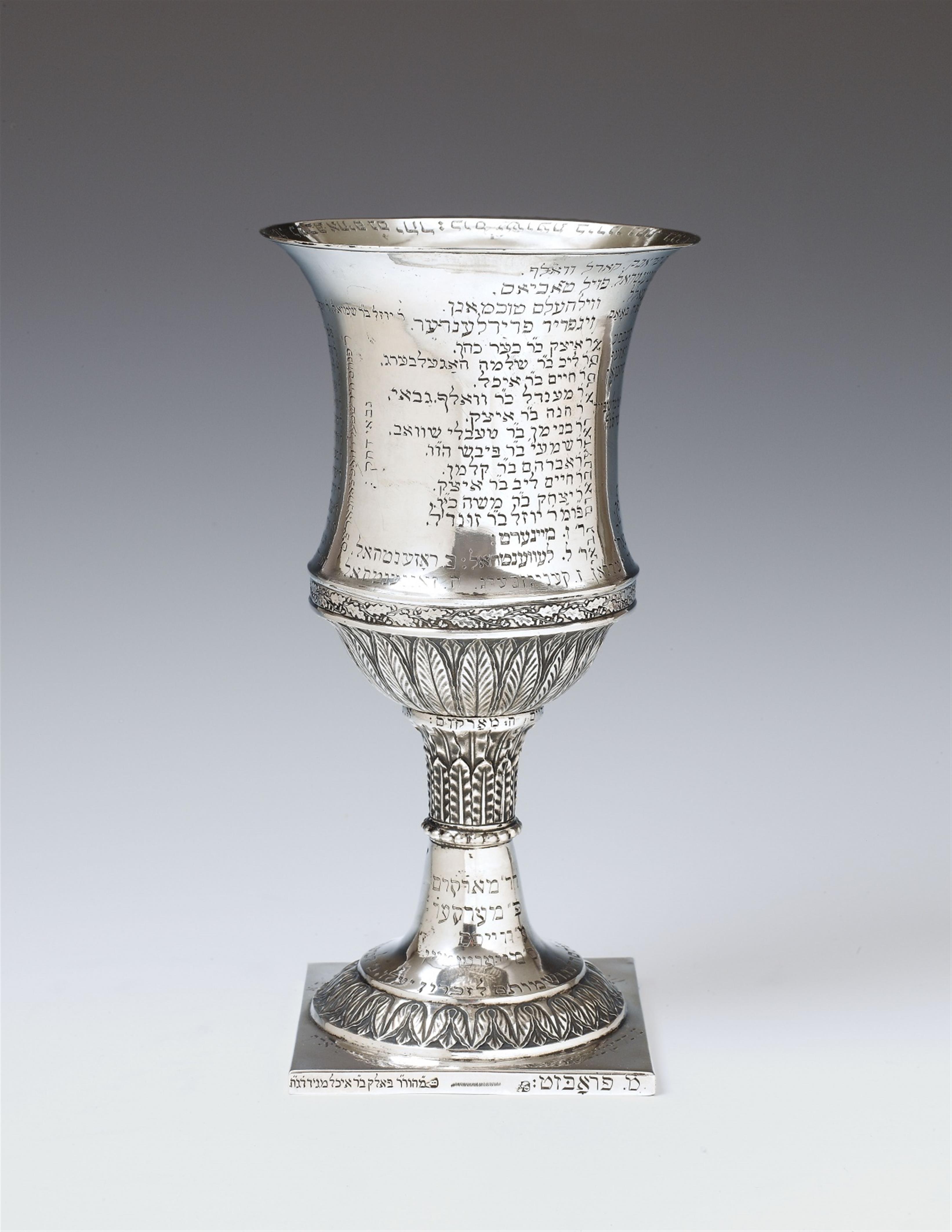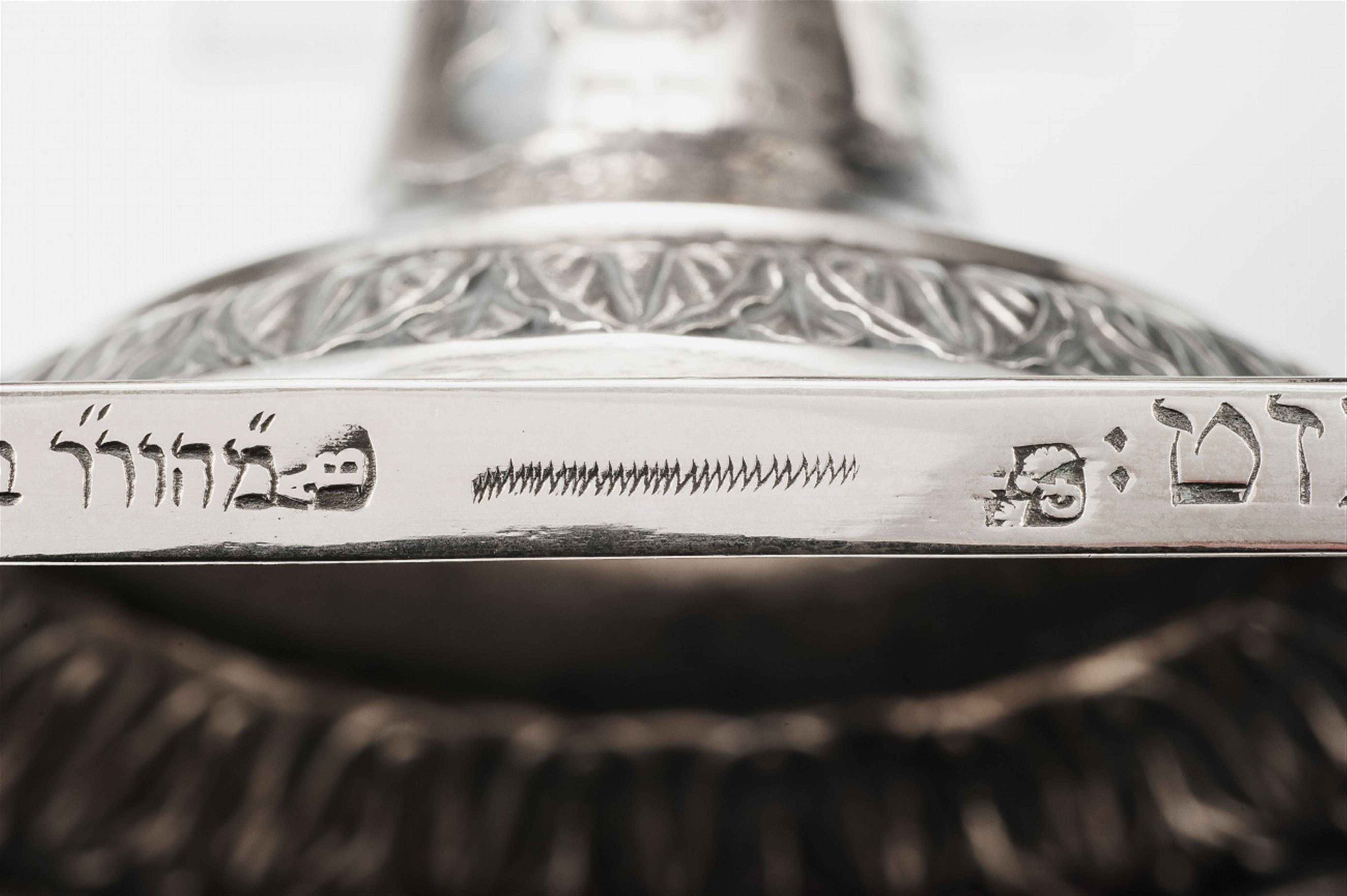An important Saxon silver cup of a Jewish fraternity. The round foot resting on a square plinth and supporting a waisted shaft with palmette decor, the vase form cup correspondingly decorated. With extensive engraved Hebrew inscriptions throughout. Saxony, probably Weißenfels, Anton August Böhme, ca. 1820.
H 27.5 cm, weight 596 g.
A translation of the Hebrew inscriptions has revealed this chalice as originating from a "Gemilut Chassid" or a Jewish charitable fraternity. This was probably a burial fraternity, a so-called "Chevra Kadisha", which gathered donations to finance dignified burials for poorer families according to Jewish ritual. The engraved inscriptions around the chalice are all names of fraternity members, most with the addition “R”, which is today translated as “Rabbi”, but can also mean an honoured or learned man.
No date or location is mentioned on the cup, but a certain “Court Dentist Hirschfeld” is mentioned as deputy treasurer of the fraternity. This could refer to Friedrich Hirschfeld (1753 - 1820) who was first employed as court dentist in Weimar, later in Oldenburg and finally under the Duke of Anhalt-Bernburg. One of the inscriptions records a decision by the fraternity to gather annually on the 15th Kislev, the ninth month of the Jewish calendar which corresponds to around late November in the Gregorian calendar. Another inscription states that the goblet was received plain, and that the names of the new members were added subsequently upon their entry into the fraternity. Similar chalices are kept in the Jewish museums of Frankfurt and Worms.
Literature
Cf. two Chevra Kadisha chalices in the Jüdisches Museum Frankfurt, illus. in: Heuberger (ed.), Die Pracht der Gebote, Frankfurt 2006, p. 524. On the tentative attribution of the rhombus crown mark to Weißenfels, cf.: Fischer, Geschichte der Weißenfelser Gold- und Silberschmiede, Weißenfels 2012, p. 11 f.; on Böhme cf. ibid., p. 69 f. On the court dentist Hirschfeld cf.: Bernstein, Geschichte der Chirurgie vom Anfange bis auf die jetzige Zeit, vol. 2, Leipzig 1822, p. 320.




